a rediscovered species, a new combination and the potential for a useful bioindicator of forest health
Lichens are an amalgam of one or more fungi, green algae, cyanobacteria or sometimes both photosynthetic partners. This relationship, a symbiosis, is perhaps best explained as the lichen farming the algae. The algae provide food for the fungus and fungus provides shelter and protection. New Zealand has c.2000 different kinds of lichens, many of which are endemic or now scarce in other parts of the world due to changing climate, air pollution or over-collection by people.
Since 2015 Unitec researchers have been working with an international team of lichenologists on the New Zealand members of the global lichen family the Lobariaceae. The Lobariaceae are a charismatic group of large foliose lichens found throughout the world. Because of their large size they are also widely used for physiological studies of lichen metabolism and as bioindicators of ecosystem health; indeed, one, Lobaria pulmonaria is effectively the equivalent of the ‘lab rat’ as the ideal ‘model organism’ for lichens worldwide.
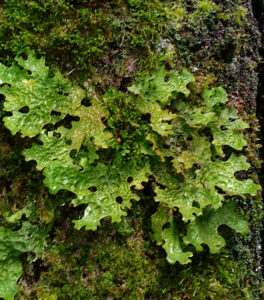
Lobaria pulmonaria, Sardegna Illorai Forest (Peter de Lange)
New Zealand is recognized hotspot of diversity for the Lobariaceae and as such has become a popular place for their further study. Past research on the family helped resolve the nomenclatural mire of names that had been used for the c.90 or so New Zealand species. Those studies necessarily used lichen chemistry and morphology to help define their taxonomy.
In the last decade there has been a renewed global interest in the taxonomy of the Lobariaceae. For these studies researchers have been using molecular methods to sort out perceived species complexes. Unitec Institute of Technology is a regional hub for lichen research and one of the few tertiary institutions in New Zealand where lichen taxonomy and ecology are taught at degree level. Because of this expertise Associate Professors Dan Blanchon and Peter de Lange from the Environmental and Animal Sciences Department and Applied Molecular Solutions Research Group have been involved with lichenologists Dr Thorsten Lumbsch (Field Museum, Chicago, USA), Dr Robert Lücking (Botanic Garden and Botanical Museum, Berlin, Germany) and Bibiana Moncada (University of Franciso José Caldra, Bogotá, Columbia) on a revision of the New Zealand representatives of the Lobariaceae using a combination of molecular (DNA barcoding using the internal transcribed spacer (ITS) region of the fungus) and morphological methodologies.
One of the groups studied is the Sticta filix group. These are large foliose lichens characterized by having a ‘holdfast’ attachment at the base of the lichen thallus, a dominant green algal partner (photobiont) and a minor secondary cyanobacterial partnership.

Sticta filix, Egmont National Park (Peter de Lange)
The research team has just published a paper in The Lichenologist (Ranft et al. 2018) which has resolved the status of two enigmatic lichens previously referred to the genus Dendriscocaulon – an artificial genus now known to be the result of a ‘failed’ or ‘failing’ partnership in these green lichens, whereby the green dominant partner has been lost, leaving the fungus and cyanobacterial associate to grow independently of its usual green algal partner (as a cyanomorph). When free-living Dendriscocaulon resemble small grey-black or black broccoli. On occasion, the same weird structures can be seen protruding from the base of an otherwise seemingly normal ‘green’ Sticta. In their paper Ranft et al. (2018) shifted Dendriscocaulon dendroides to Sticta as a new combination S. dendroides because they were unable to discover the green algal dominant Sticta that cyanomorph belongs to. They also showed that the cyanomorph referred in New Zealand to Dendriscocaulon dendriothamnodes is not present. Instead superficially similar cyanomorphs seen here are associated with Sticta latifrons and S. menziesii. As expected Sticta filix also has its own free-living cyanomorph.
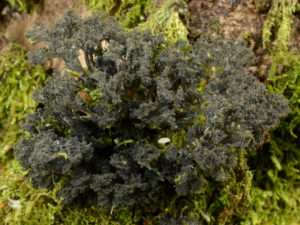
Sticta dendroides, Erua Forest, Tupapakukura waterfall track (Peter de Lange).
The second part of the paper revived the name Sticta menziesii. This species had been treated as a synonym of S. latifrons. Ranft et al. (2018) showed that Sticta menziesii is morphologically and genetically distinct from S. latifrons, with which it sometimes grows. They also found that Sticta menziesii has its own unique Dendriscocaulon cyanomorph.
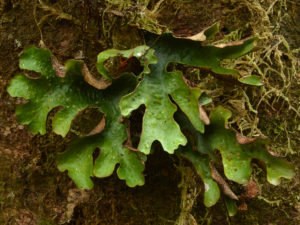
Sticta menziesii, Erua Forest, Tupapakukura waterfall track (Peter de Lange)
The study also noted that Sticta menziesii and S. dendroides were confined to ‘intact’ forested ecosystems. That is these two lichens favoured forests with low possum, goat and deer densities. Sticta latifrons they noted was more common in ‘open’ forest, so it was more often seen in forest damaged by these browsing animals. This research suggests there is potential for Sticta latifrons and S. menziesii to be used as a ‘quick-check’ forest health indicators and is worthy of further study.
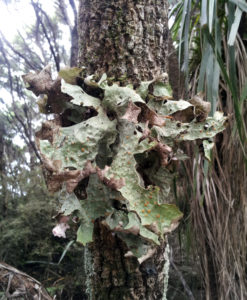
Sticta latifrons, Unuwhao Forest, Te Paki (Peter de Lange)
Reference
Ranft, H.; Moncada, B.; de Lange, P.J.; Lumbsch, H.T.; Lücking, R. 2018: The Sticta filix morphodeme (Ascomycota: Lobariaceae) in New Zealand with the newly recognized species S. dendroides and S. menziesii: indicators of forest health in a threatened island biota? The Lichenologist 50(2): 185-210.
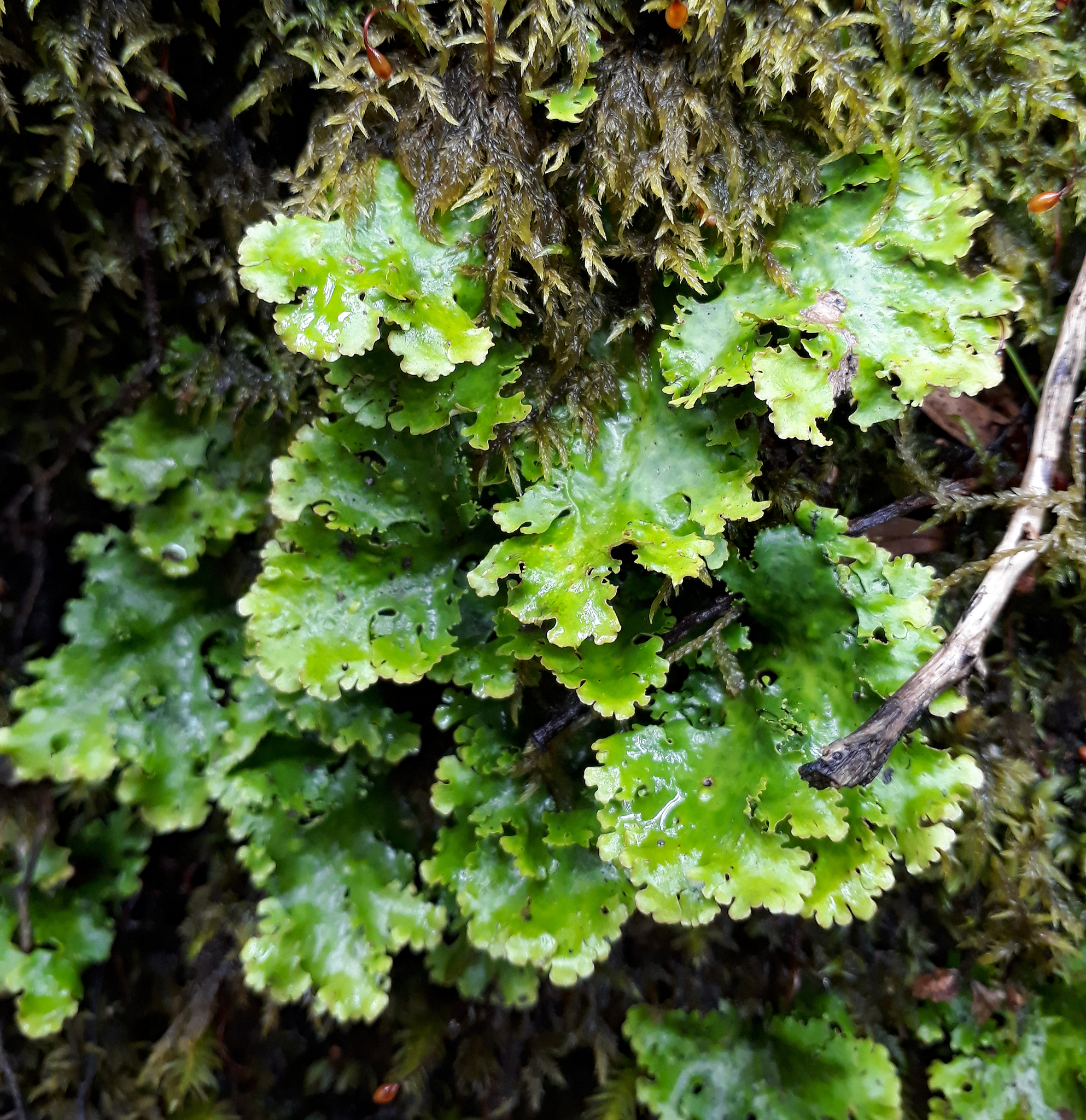
Leave a Reply